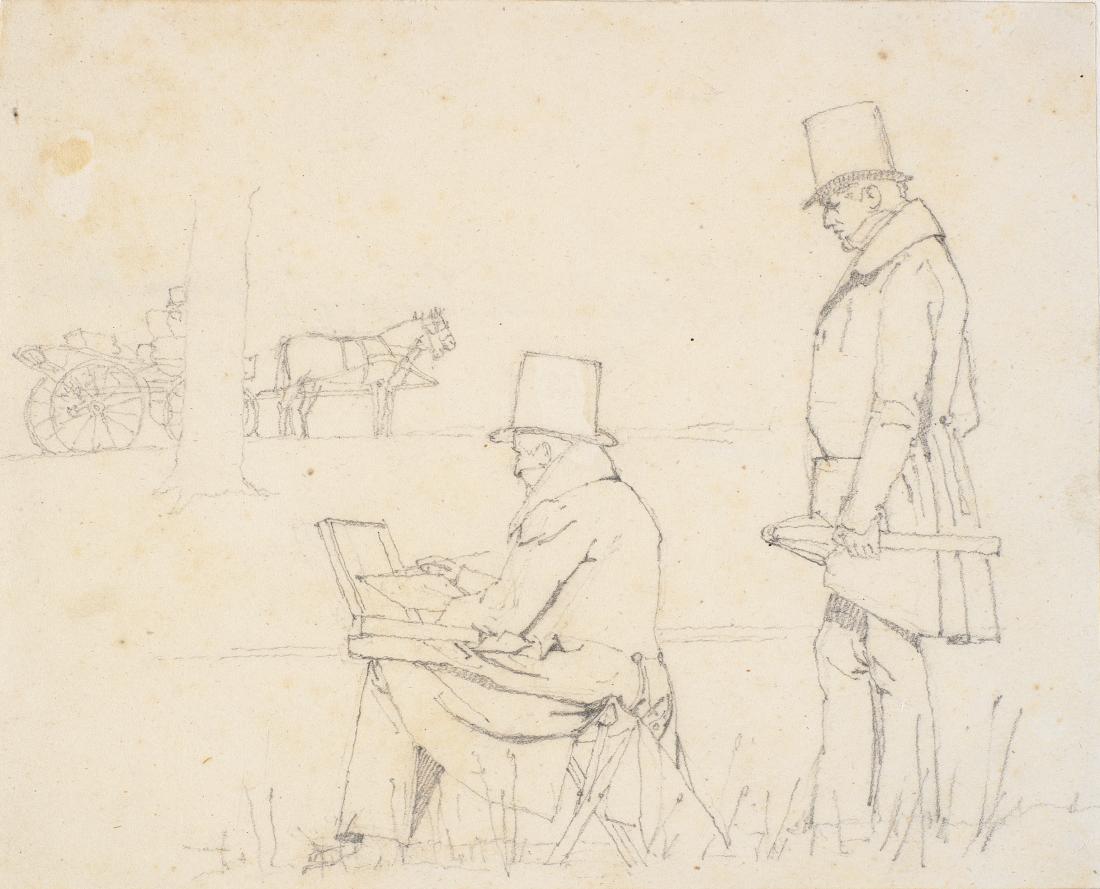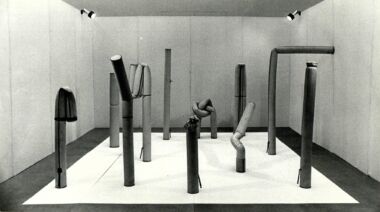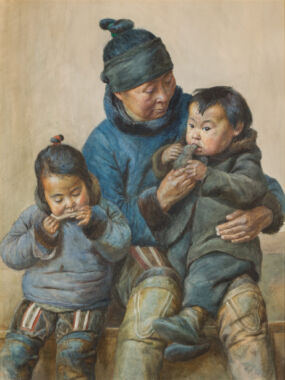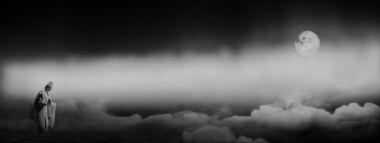Summary
The article describes the introduction of plein-air painting in 1820s Denmark, which was partly undertaken through the initiatives of a group of young academy students acting independently at the beginning of the decade, and partly through official art academy initiatives from 1823 onwards. With J.P. Møller’s introduction of an annual competition on landscape painting, open-air painting became part of the academic curriculum for painters – an initiative that recent art history usually attributes to Eckersberg.
Article
It is a well-known, much-described fact that between 1780 and 1830, almost all art scenes in Europe developed a keen interest in painting out of doors. In Denmark, the introduction of plein-air painting has long been attributed to C.W. Eckersberg, who began working in this manner while abroad in 1810–16, first in Paris, then in Rome. Eckersberg is also supposedly the man responsible for making outdoor painting part of the official curriculum of Academy studies in Denmark; an alleged honour bestowed on him due to the excursions he arranged for his students to areas north of Copenhagen in the 1830s.1 However, this widespread belief is not entirely unproblematic. Closer inspection would seem to reveal that the true breakthrough of plein-air painting in Denmark actually took place a decade before Eckersberg conducted his much-acclaimed tours, and that this breakthrough took place in circles and settings that were very different from those of the professor’s own group of students. The question is, then, at which points and to what extent the various categories of students took up plein-air painting, and who ultimately launched the idea to make such activities part of the academic curriculum.
The first independent outdoor excursions
There is much to suggest that communal excursions that incorporated outdoor painting first found favour in Denmark among some of the autonomous, self-directed student communities that existed outside the academy classrooms. Such circles of likeminded artists are familiar to us from other art scenes in Europe at the time.2 In Copenhagen the idea of independent artist communities and associations was particularly favoured by a group of young artists belonging to the same generation, most of them from the duchies (Schleswig and Holstein). These were confident young artists who had already seen the world, or at least felt they had. Carl Goos (1797–1855) had studied under J.H.W. Tischbein in Eutin, whereas Ditlev Blunck (1798–1854) and Ernst Meyer (1797–1861) elected to enrol at the Munich academy.
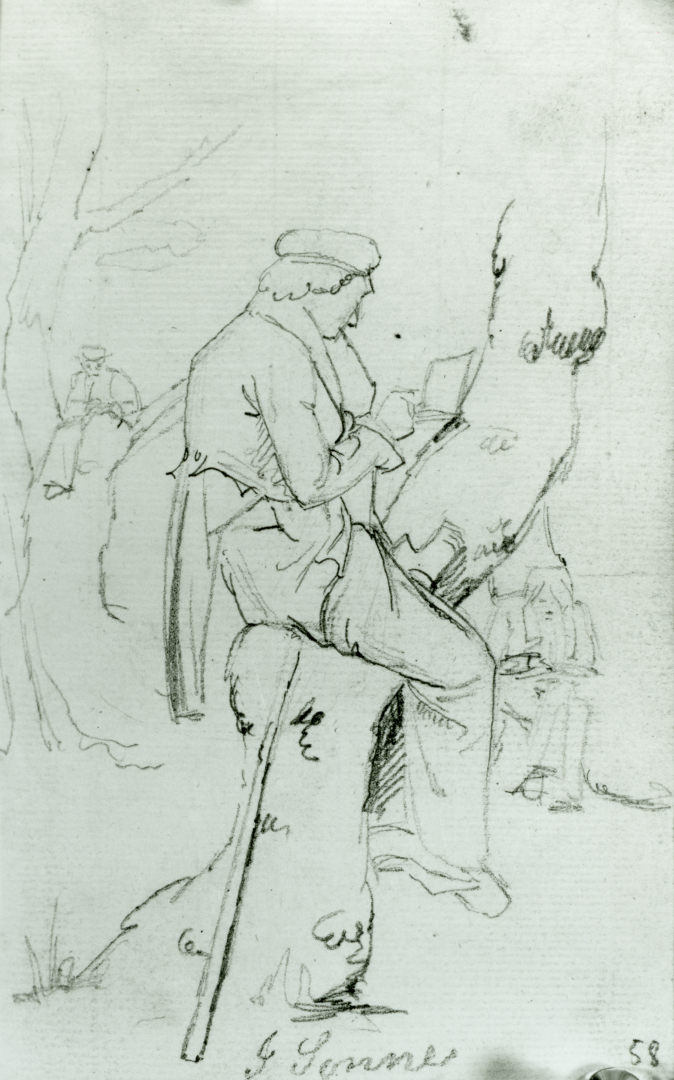
While in Copenhagen they made the acquaintance of three prospective artists studying under professor J.L. Lund: Jørgen Sonne (1801–90), Albert Küchler (1803–86) and the slightly older H.W. Bissen (1798–1868), who was at this point faced with the choice between the art of painting or a career as a sculptor. The circle also included the Frisian painter Harro Harring (1798–1870), who had begun his studies in Copenhagen and subsequently went on to study in Vienna and Dresden, where he had painted out of doors side by side with J.C. Dahl.3 Harring was a true romantic with a fierce commitment to art and politics, and his eventful, roaming life made him quite a legendary figure. At the age of thirty he published a four-volume autobiographical travelogue that includes memoirs from his days at the Royal Danish Academy of Fine arts in Copenhagen; all his fellow artists are portrayed in this book, disguised by inventive pseudonyms.4
In the early 1820s these friends were all in Copenhagen, each of them shaped by widely different experiences and lessons from their education thus far. One of the highlights of their fruitful interaction was their joint excursions. Harring and Bissen had gone hiking together before, for example in the autumn of 1820 and again in the spring that followed, but excursions of this kind would come to be an important joint activity for the entire circle of friends.5 Harring would later recollect one of these trips in these terms:
“We now find them all in Charlottenlund, and – as always when Rhonghar and Wilhelm [i.e. Harring and Bissen] were in the countryside – they were drawing each other. One would slump down onto the long grass, and his friends would settle down around him, practicing foreshortening etc. Every time a sketch was finished they would switch positions, and so every sketchbook contained such scenes of our reclining academy. Quite frequently someone would dangle from a tree (many trees were climbed) and was thus obliged to model in that position – not standing, or lying down, as is the custom everywhere, but swinging.”6
With his expression “reclining academy” Harring jokingly seeks to establish this group of friends and their excursions as an informal space of general education and as a counterpart to the official art academy. However, the academy quite obviously played no part in these early study excursions, which took place entirely at the friends’ own behest. Even so, the scope of these outings was not exclusively social or recreational; they were also about art: illustrations that corroborate Harring’s description can be found in Bissen’s and Küchler’s sketchbooks from a jaunt made in May of 1823, where both artists honed their ability to depict foreshortening by making drawings of Jørgen Sonne sitting in a tree.7 [fig.1]
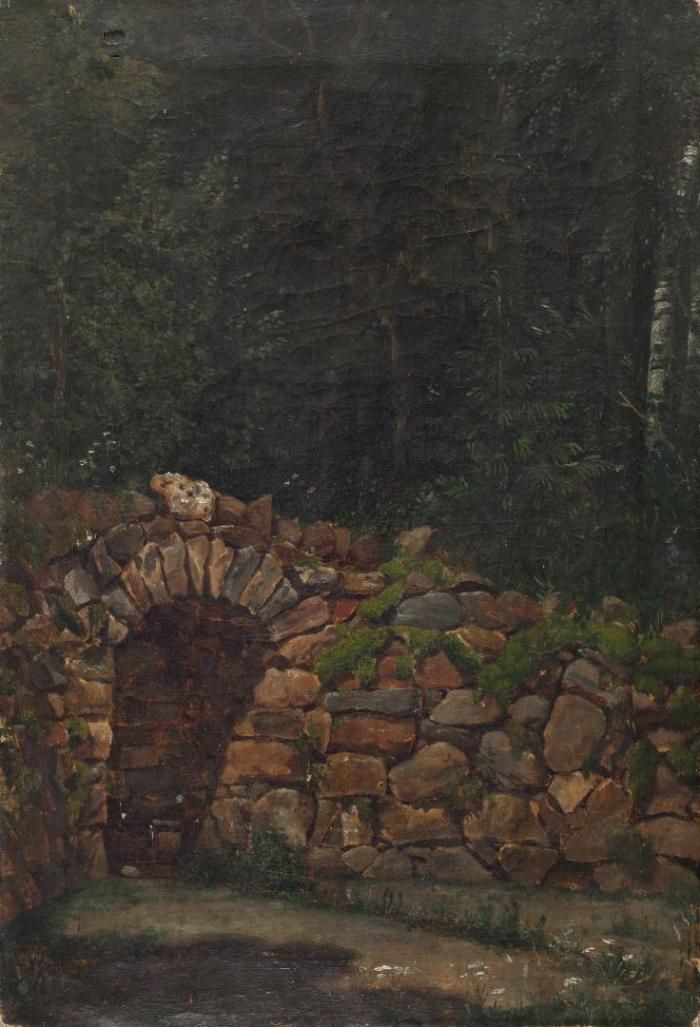
Even though the artists seem to have generally brought only sketchbooks and pencils along on these excursions, they did not always leave their paint boxes at home. We find a rare example of the circle’s interest in plein-air painting in the summer of 1821, when Bissen and Harring had taken a cottage in the countryside during the midsummer weeks. On this particular occasion the two painters rented a cottage in an idyllic spot close to a quiet lake complete with swans – probably Gentofte Lake – and near a pair of ancient burial mounds that Harring calls “Bröderhoyene”, that is Brødhøjene north of Gentofte, which was then still a village.8 On Saturdays and Sundays their friends would come up from Copenhagen to visit, but during the week Bissen and Harring worked alone in a nearby “forest”, which we can only assume is the grounds of Bernstorff Castle.9 ”Hier zeichneten und malten sie nach der Natur” (“Here they drew and painted after nature”), recalled Harring seven years later.10 One of Bissen’s works from this era shows the old stone structure at the wellspring in the castle grounds, a work that must be regarded as one of the earliest surviving plein-air oil studies executed on Danish soil. [fig.2]
Whether Bissen’s and Harring’s painting trip in the summer of 1821 was an isolated event cannot be determined as yet. The social aspects of the main trips and the sheer number of participants they attracted would hardly have been conducive to focused, long-term studies. Indeed, the Bissen circle mainly consisted of history painters for whom outdoor painting was not an object in its own right. Overall, the artists’ sketchbooks from the first half of the 1820s mainly reflect an interest in drawing each other in the act of working.11 The friends’ drawings are poignant examples of what has been called “The new self-consciousness about studying after nature, the desire to record oneself or others in the act of sketching […]”12 As long as the academy students’ jaunts were infused by such puerile self-absorption, plein-air painting did not play a major part within the overall excursion culture. However, all this had already begun to change in 1823, when the academy suddenly took steps to promote and strengthen outdoor painting.
The academy’s competition for landscape painters
In 1812 the painter Jens Neuhausen (1774–1816) – who is now largely forgotten – drew up a will that promised quite a large sum of money to the academy. The intention behind the bequest was to have the academy set up a range of different competitions for its students – including competitions focusing on lower-ranking genres such as landscape painting. Spurred on by Neuhausen’s promise, in 1814 prince Christian Frederik introduced competitions with cash prizes as part of the new academy regulations.13 From this point on, competitions for cash prizes (one small, one large) could be launched for each of the three major subjects taught at the academy: architecture, sculpture and painting. However, given that the objective of such competitions was, at first, simply to prepare the students for competing for the academy’s traditional silver and gold medals, the new competitions staged for painters were envisioned solely as contests that focused on life painting, specifically after a male model.
Perhaps the academy was awaiting the death of Jens Neuhausen and his wife, which would enable them to use the promised bequest to fund the prizes. Whatever the case may be, we certainly know that no money was set aside for cash prizes at this point – neither small nor large. It was not until 1822, when professors J.L. Lund and C.W. Eckersberg began paving the way for setting up a proper school of painting, that the initiative actually gave rise to the first life class competitions.14 At this point the landscape painter J.P. Møller (1783–1854) entered the fray, requesting the academy to also stage prize competitions for the other, so-called lesser genres. Møller, who had presumably painted out of doors in the company of Eckersberg back in his youth, wrote a plea to prince Christian Frederik:15
“Given that in recent years the art of landscape and animal painting has progressed to such an extent that it has, on several occasions, attracted the attention of the Art Academy and of discerning audiences, it would be of great benefit and much encouragement to young artists and to the furthering of their education if the Academy would, as for the art forms set out in Section 51, also set up similar prizes for landscape and animal painting, either for composition pieces or for studies after nature.”16
The idea behind such cash prizes was to encourage students to also make steady progress in genres that were less highly esteemed. Indeed, the notion that the academy should ‘encourage’ students to make progress within specific disciplines was a widespread concept at the time. The year before, Eckersberg noted that, “if at some point cash prizes might be offered to painters of animals and landscapes, this would be a great encouragement to the practitioners of such art.”17 In 1823 Møller himself expressed similar sentiments in his proposal for competition rules: “By offering such encouragement, the Royal Academy will certainly contribute greatly to the education of these young people, prompting a sense of healthy rivalry that will, as a matter of course, have the most excellent consequences for their further progress in art that one could possibly wish for.”18 Several academy professors voiced a similar desire for competitions within other branches of the art of painting.19 Thus, the Academy Assembly took a positive view of Møller’s proposal for a competition focusing on landscape painting, but it is likely that some uncertainty about students’ responses – whether they would approve and support such a competition – caused the final decision to be delayed.20
Having undoubtedly gauged the responses of his students, Møller presented a proposal for a complete set of rules for a landscape competition towards the end of summer 1823. He suggested that the subject of the first competition should be “a distinctive group of trees, either oak, beech, ash or chestnut, painted after nature,” and he also recommended that all participants should first submit their own drawings, at which point the academy would choose the best one of them all.21 The contestants could then “use the months of September and – weather permitting – October” to translate the subject of the single winning drawing into oils. It is worth noting that with this move Møller simply adopts the procedures employed in the competition held by the academy’s life class school, where the best drawing was to be used by all participants. To prevent too much difficulty in terms of the practicalities associated with venturing out to study nature outside of the academy, the Academy Assembly stipulates that the contestants’ drawings should be executed “within the outer demarcation of Copenhagen.” Seven young painters submitted drawings, and six ultimately submitted a painting each: Johan Stroe, Friedrich Thöming, Rasmus Holm, Thomas Fearnley, Heinrich Buntzen and Peter Wisby. All six were private students studying under J.P. Møller, which means that they specialised in landscape painting – a recurring trait of most contestants in the years that followed.
The importance of studies from nature in the competition
In J.P. Møller’s 1823 proposal he put great emphasis on the students’ ability to accurately depict their chosen subject, and indeed the cash prize for that year was awarded to Johan Stroe (1805–1865) “because he mimicked nature with the greatest degree of faithfulness.”22 And when prize winners as well as other contestants’ works were at times featured in the academy’s exhibitions they would usually be explicitly identified as ‘studies after nature’ rather than one of the many landscape ‘compositions’. According to the general parlance of the time, a ‘study after nature’ generally simply meant that the work was created in front of the given subject, usually a life model, but in the context of these competition pieces the term should be taken literally: these studies were made in nature.23 What has been hitherto overlooked in this regard is the simple fact of the logical consequence of Møller’s remarkable statute stipulating that “the student who produced the best drawing should be allowed the privilege of picking out his seat before any other student is permitted to choose his.”24
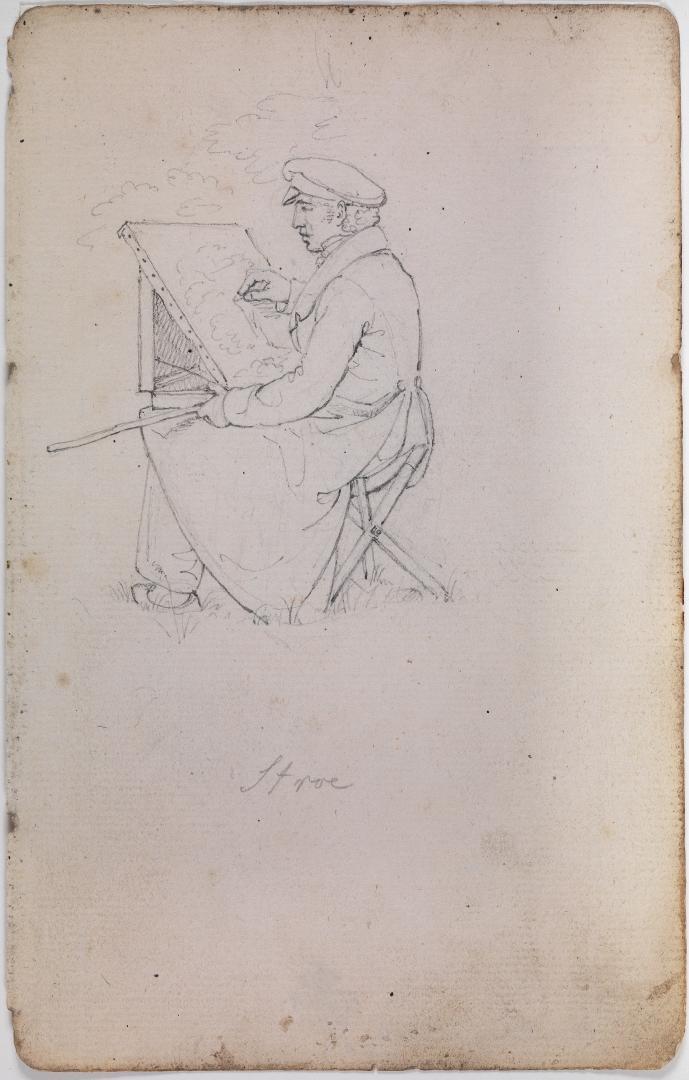
This rather misplaced statute – adopted, as we saw in the above, from the competitions staged in life classes – implicitly prompt something rather unusual: an organised, collective study of nature. When the best draughtsman is given first choice on where he wishes to take up position, we must conclude that all contestants were expected to paint alongside each other at the site itself.
In the years that followed, the contestants would work side by side in the open air every summer. In 1832, where Just Jerndorff, Georg Hilker and F.C. Kiærskou competed to offer the best depiction of “a group of elms located between Ladegaarden and the lime works,” Eckersberg made this diary entry on 17 August: “This afternoon we went on a tour (…) past the churchyard to the Falkoneerallé street, where we visited those competing for the cash prize; we returned via Ladegaardsvei”.25 A professor was specially appointed to supervise each competition; that professor would be in charge of the contestants’ excursions to their chosen site, which might be e.g. Charlottenlund, Emdrup, Frederiksberg or Østerbro. J.P. Møller took on this responsibility on numerous occasions, for example in 1823 and 1824, and this fact even became an argument in favour of offering him an official residence at Charlottenborg in 1828.26 At this point in time studies from nature were not generally part of the curriculum at European academies of art,
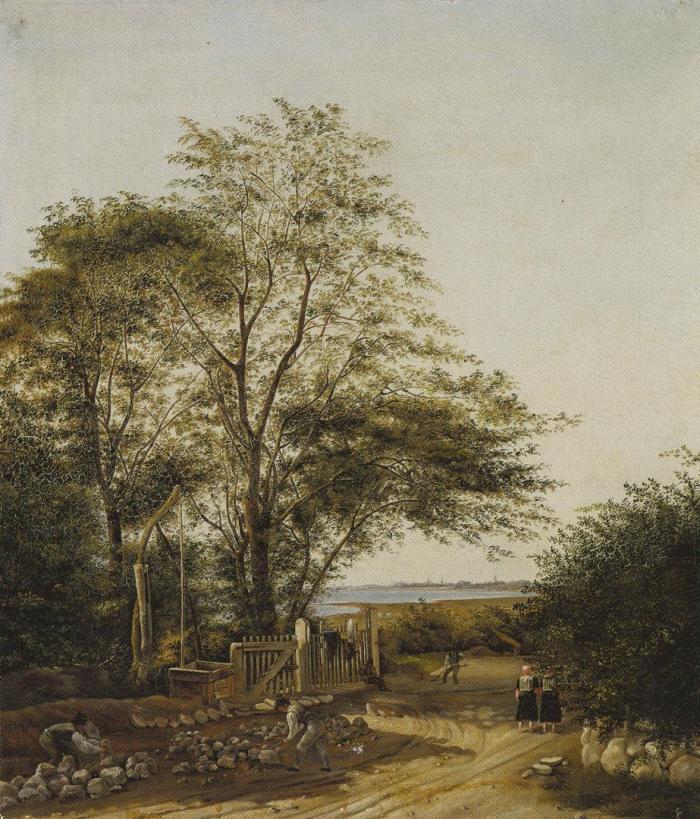
and the 1823 competition must be regarded as the first example of outdoor painting used as an official part of the education of painters in Denmark.27 Entries submitted to the competitions in 1827, 1828 and 1832 still survive today. These paintings all measure around 49–54 by 56–68 cm, which makes them rather bigger than most later open-air studies – these were usually restricted to a size that would enable them to be kept inside the lid of a paint box. This might easily prompt us to believe that the actual competition pieces were executed back at the artists’ studios rather than from nature. However, there is much to indicate that this was not the case. For example, in 1828 Eckersberg gives one contestant “a token to receive a tent under which to paint”, and a few years later J.P. Møller suggests that the contestants should borrow tents from the artillery for their excursions.28 Given such conditions, the painters might easily have worked on the larger canvases outdoors, and they would presumably at the very least have been expected to commence work on their paintings in front of their subject matter.29
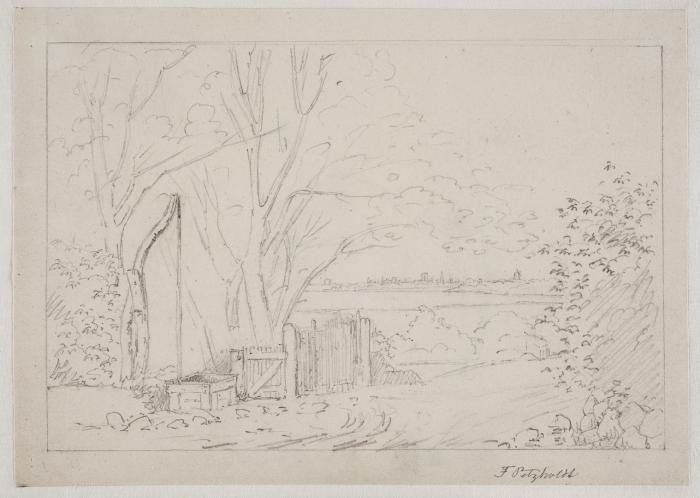
The SMK’s Royal Collection of Graphic Art owns a drawing by Constantin Hansen that depicts the landscape painter Johan Stroe sitting out in the open air, busily drawing a group of trees onto his canvas. [fig.3] Judging by other leaves from the same sketchbook, the drawing must have been executed in 1826 or 1827.30 And the format and subject matter of the painting that Stroe appears to be in the process of preparing is entirely in keeping with the competition held in 1826.31
The competition rules dictated that the contestants would sit in a circle around their chosen subject. The approach resembles some of the life classes conducted at this time back at the Academy’s premises at Charlottenborg, and this would make it possible to set up a sequence of paintings painted from various points of view. Indeed, this to some extent holds true for the 1827 competition, as is demonstrated by surviving submissions by Fritz Petzholdt [fig.4] and one of his fellow contestants.32 The two paintings resemble each other to the point of being identical, which may simply signify that each contestant made sure that he had a copy of the winning drawing at hand while working, thereby ensuring that they would not deviate too much from the chosen composition. Petzholdt’s own copy of the winning drawing also survives, clearly demonstrating the very narrow confines within which all contestants had to work. [fig.5] Their main task was to depict the shape and colour of the trees; artistic license was limited to the option of adding a few embellishments or making minor changes to the cropping and format of the scene.
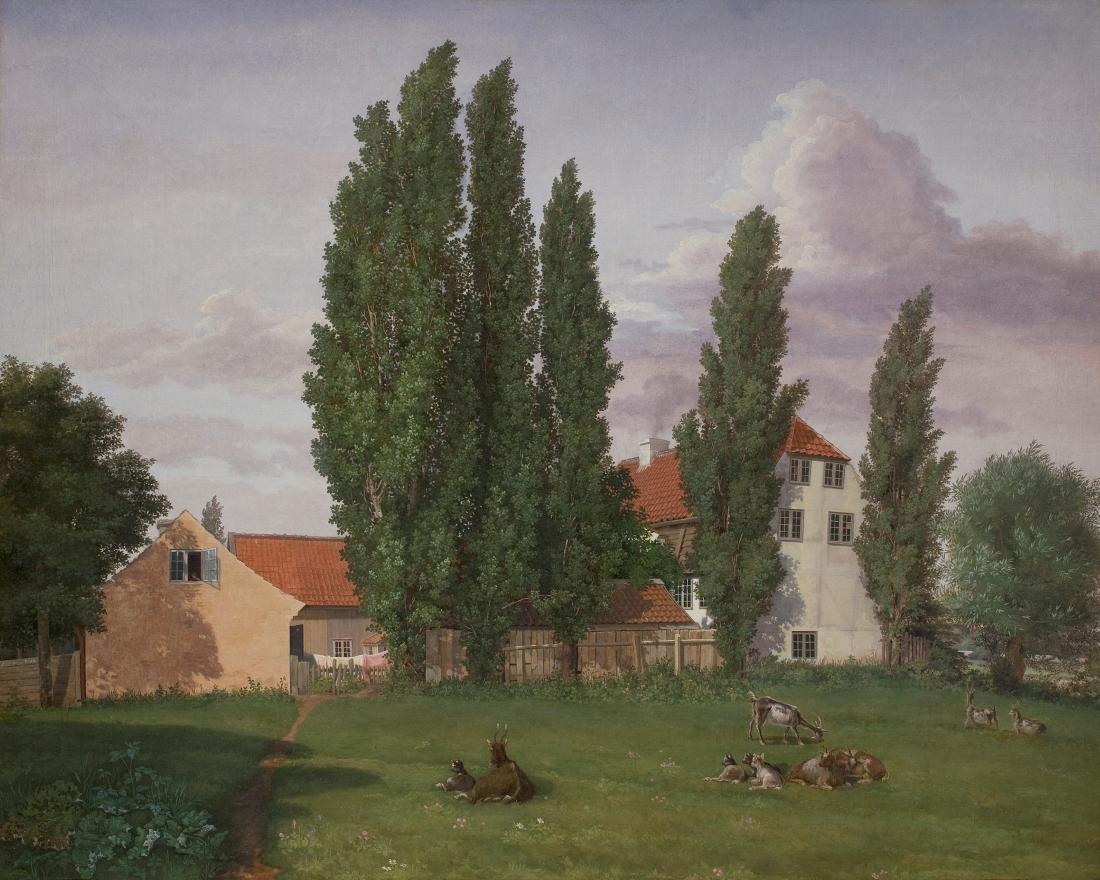
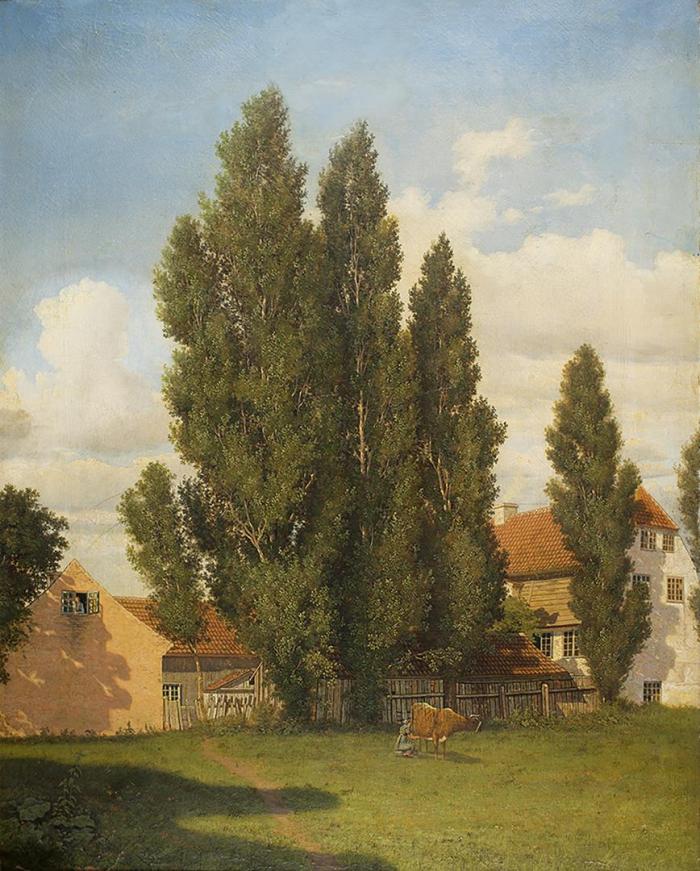
We can form some idea about the contestants’ working conditions from descriptions of the competition held in 1828. Once again, a couple of works survive, specifically Frederik Sødring’s and Heinrich Buntzen’s paintings from Marialyst in Frederiksberg just outside Copenhagen.33 [fig.6-7] As dictated by the rules, the two artists would almost have been rubbing shoulders as they sat down to paint, which they seem to have done on either side of a trampled pathway. When Sødring exhibited his competition piece in the spring of 1829, he let it be accompanied by another painting that, in its depiction of a young painter’s camp in Frederiksberg, seems to convey some memory of the preceding summer’s competition.34 [fig. 8] Sheltering underneath a large ridge tent – perhaps the very tent that was issued at Eckersberg’s recommendation – the painter is shown working on a canvas of a size similar to that of the competition work. For the first time ever, a Danish painters’ outdoor work formed the subject of an exhibition painting, and in many ways the work can be regarded as programmatic: social interaction and camaraderie between students remains a key theme, but here the study of nature itself plays a more prominent part. The painting radiates the newfound confidence seen in landscape painters at the time.
Artists’ excursions after 1825
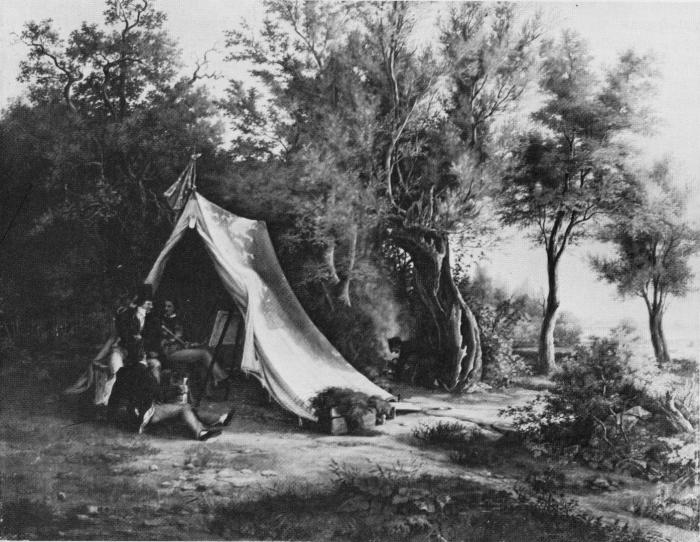
While students of landscape art (who were almost without exception private students studying under J.P. Møller) conducted joint excursions in the regions around Copenhagen every year, other groups of Academy students also continued to go on trips together. One of Jørgen Sonne’s sketchbooks – presumably from a jaunt made in early June of 1824 or 1825 – shows the painter’s fellow artists, all with their paint boxes in their laps. [fig.9] At this point, studies after nature had displaced the self-absorbed tradition of ‘the reclining academy’, and in the wake of the academy’s competitions it became commonplace to see young painters set out on study trips together, their oils carefully packed.
At this point Eckersberg – possibly spurred on by the activities evident amongst academy students and contestants – also picked up en plein-air painting again, a method he had largely abandoned after returning from Rome nine years before.35 His diary for the summer of 1825 contains several entries that mention having painted during excursions to areas north of Copenhagen. Shortly afterwards we also see the first signs suggesting that Eckersberg’s own students had begun painting en plein-air on their own, as illustrated by Martinus Rørbye’s drawing from a shipyard in Christianshavn. [fig.10] However, not until the early summer of 1831 do we finally find reports stating that the professor has taken his students on a painting expedition. Art historians have been eager to regard this trip as a successor to a series of previous, undocumented excursions.
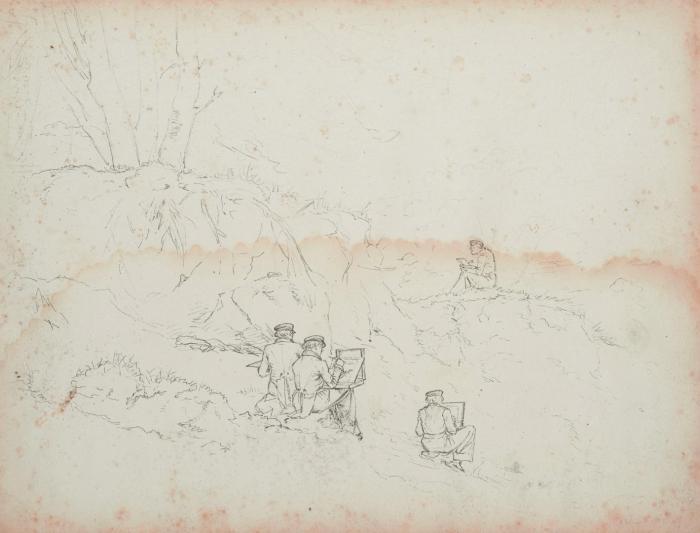
However, there is nothing to indicate that this is the case. Such social excursions required a very close, almost familial relationship between the professor and a larger group of students, and such a relationship did not truly arise until the late 1820s. At this point Eckersberg’s son Erling had reached an age that enabled him to take part in painting exercises and excursions, and so too had several academy students that were sons of Eckersberg’s friends: Fritz Petzholdt, Adam Müller and Wilhelm Marstrand. After the deaths of Hans Hansen and C.A. Lorentzen in 1828, Eckersberg’s circle of students was further bolstered by Constantin Hansen, Jørgen Roed and Christen Købke. Once all these young painters had come together, the stage was set for joint excursions – and not before.
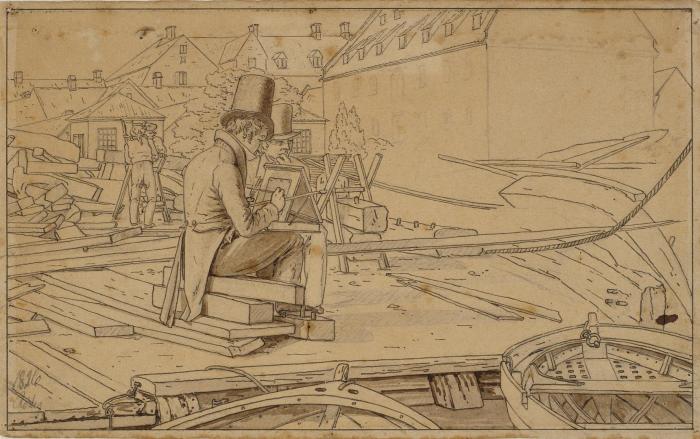
Eckersberg made his first diary entry about an expedition with students on 27 May 1831. The party ventured to Frederiksdal, and Eckersberg was accompanied by Marstrand, Købke and Rørbye as well as by his own sons Erling and Jens. On this trip each artist painted a scene from the Furesø lake; only Eckersberg’s canvas survives today.36 Eckersberg’s next mention of such an excursion comes soon afterwards, on 5 July; that particular outing went to Vedbæk, and the participants were Roed, Marstrand, Købke and Erling Eckersberg. After this point, arranging an expedition in the early days of July seems to become something of a tradition. Certainly, a year later we find Eckersberg, Marstrand, Købke and Erling in the Dyrehaven area north of Copenhagen; it was on this trip that Købke created his well-known drawing of Marstrand watching Eckersberg paint. [fig.11] In July 1833 the group made yet another expedition, their numbers supplemented by Constantin Hansen and Adam Müller.37 However, poor weather meant that they only got to draw a little, obliging them to return five weeks later to paint in the same spot.38 After a few years of such excursions the communal plein-air studies gradually subsided as the young painters went abroad one by one.
As has been demonstrated here, Eckersberg’s excursions with students in the early 1830s were not a particularly innovative initiative. Quite the contrary: those expeditions came in the wake of a decade that had seen great activity in this respect. The famous excursions from the early 1830s can more accurately be regarded as evidence of a period with particularly strong bonds (including familial bonds) between students and their professor than as signs of a definite teaching practice in the proper sense of the term. J.P. Møller had already taken the initiative to make such excursions part of an institutional curriculum, even if he was not teaching at the Royal Danish Academy of Fine Arts. And at this point his initiative was gradually growing obsolete. After the immediate success of the competition, which was staged annually for the first decade, interest waned, and the number of contestants dropped over the course of the 1830s. Nevertheless, the Academy Assembly continued to present new assignments almost every year until 1846, and in 1832 they even raised the cash prize incentive from 30 to 40 silver Rix dollars in an attempt to attract more contestants. This first step towards developing the landscape genre had obviously played out its part as landscape painters grew increasingly confident and ambitious, and as landscape painting received growing acclaim among audiences and critics alike. During the last seven years of the competition’s years in existence, not a single contestant applied to enter. At that point the so-called Neuhausen Competition had become far more important. For landscape painters, this new competition was not just about the faithful representation of a given location; rather, the objective was to represent the essence and character of the Danish countryside through a synthesis of landscape elements. The art of landscape painting had evolved, and pure studies from nature had become a perfectly natural, integral part of the curriculum and the artists’ practice. ▢
Translation by René Lauridsen
